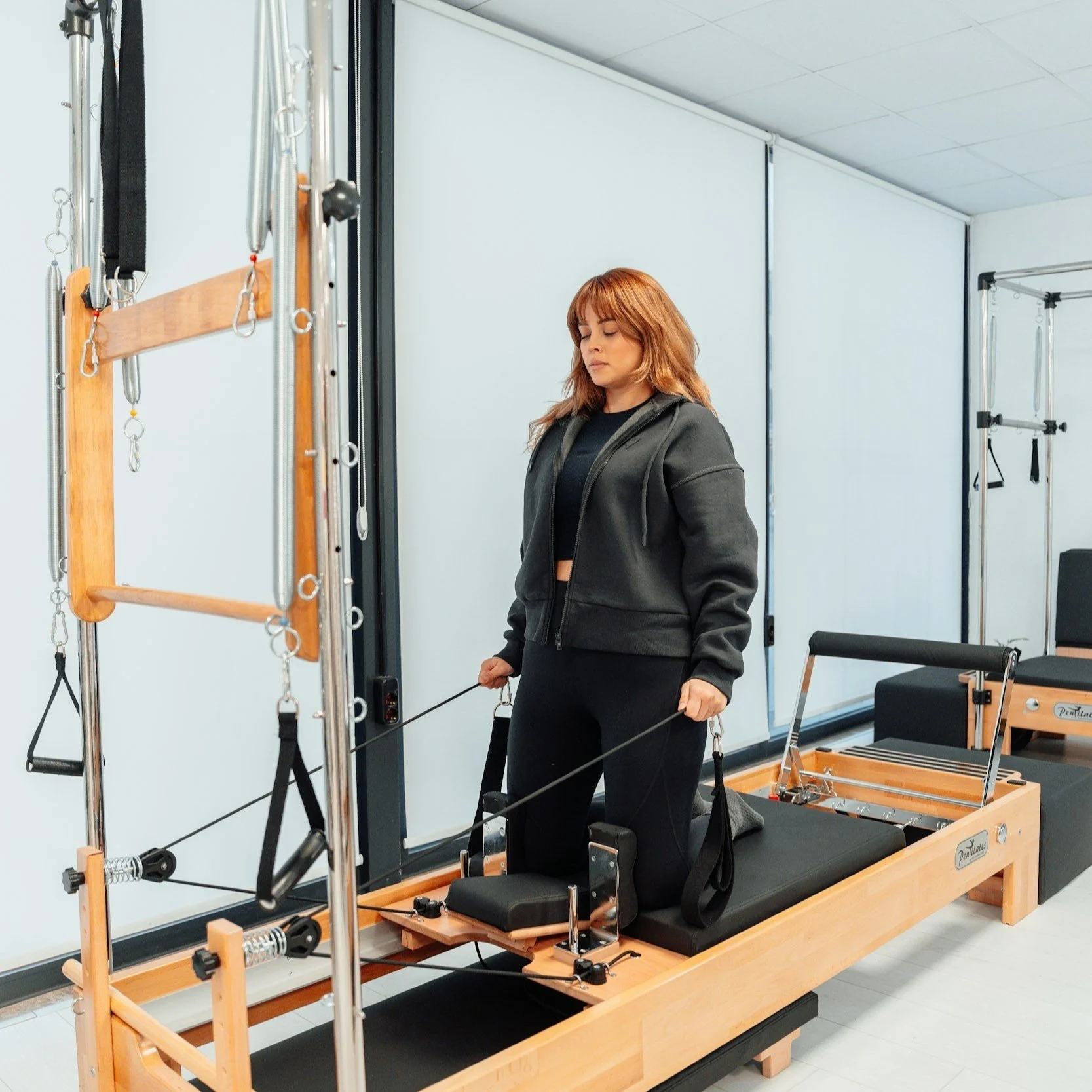Mastering Class Prep: Essential Tips for New Pilates Instructors
Starting your journey as a Pilates instructor is incredibly exciting but also nerve-racking! My latest blog is here to help you hit the ground running. With over eight years of experience in the Pilates industry I’ve packed this blog with essential tips designed specifically for new instructors like yourself.
Discover practical advice on creating engaging and effective workouts, addressing various fitness levels, and tackling common challenges. Gain the knowledge and confidence you need to make a lasting impact in your Pilates career!
From Pilates Enthusiast to Pilates Instructor and Physiotherapist
Hello! I’m Alannah
A Bit About Me
Before we dive into the tips, let me share a bit about my background. I began Pilates at 14 to manage scoliosis and low back pain, which sparked a passion that led me to study Matwork and Reformer at PilatesITC and later earn a Bachelor’s degree in Physiotherapy. With eight years of teaching experience across clinics, boutique studios, gyms, and corporate settings, I’ve helped clients of all ages achieve their fitness goals. My blend of physiotherapy and Pilates principles allows me to create classes that are not only effective and safe but also enjoyable, aimed at enhancing your overall wellbeing.
Ready to take your class preparation to the next level?
Here are my 10 top tips designed to help new Pilates instructors like yourself create dynamic and impactful sessions.
1. Know Your Clients’ History and Goals
Understanding your clients’ backgrounds and goals is crucial for tailoring your class effectively. By gathering information on past injuries, current fitness levels, and personal objectives, you'll be able to modify or progress exercises on the fly without scrapping your entire class plan. A quick, friendly chat before class can provide valuable insights, ensuring you deliver a session that's both safe and motivating.
2. Structure Your Class Thoughtfully with Focus on Flow and Safety
Design your class with smooth transitions between exercises to ensure a seamless flow. Emphasise safety by briefing your clients on proper form and setup beforehand.
A well-structured class not only keeps clients engaged but also minimises the risk of injury. Ensure each exercise flows naturally into the next, creating a cohesive and enjoyable experience for everyone.
3. Provide Exercise Progressions in Layers
Not all clients will be at the same fitness level, so it's important to offer layered progressions. Start with a basic version of an exercise and provide more challenging variations for those who are ready to advance. This approach ensures that everyone can participate and benefit from the class, regardless of their experience level. Think of it as building blocks—start simple, then stack on the challenges as your clients grow stronger.
4. Have On-the-Spot Modifications Ready to Go
Be ready to offer modifications on the fly to meet individual needs, such as accommodating mild injuries or discomfort. Having a few go-to alternatives in your toolkit ensures your class remains inclusive and adaptable. While it can be nerve-racking at first, seeking guidance from a mentor can be incredibly helpful in building your confidence and skill in this area.
5. Use Simple, Varied Cues to Suit Different Learning Styles
Clients have different learning styles—some benefit from visual cues, while others respond better to verbal instructions. Use a mix of clear, concise cues to cater to these varied preferences, ensuring everyone understands how to perform exercises correctly. Additionally, always ask for permission before providing tactile cues to respect personal boundaries
6. Use Props to Support, Enhance, and Add Variety
Props are like spices in a recipe—when used correctly, they can elevate your class. They provide support, enhancement, and variety, making your sessions more engaging. However, you want to avoid overloading your class with too many props, as this can disrupt the flow and cause confusion. A good rule of thumb is to choose 1-2 props that complement each other. My favourites are the Magic Circle for that extra juicy burn and the Pilates ball for its versatility!
7. Celebrate Your Clients’ Wins!
Recognising and encouraging clients’ efforts and progress is KEY to keeping them motivated. Celebrate their achievements, no matter how big or small, and let them know you see all their hard work.
8. Practice New Flows Before Teaching
This is a must, I can’t stress this enough. There’s nothing more awkward than when you’re trying to wing it and it just isn’t working out how you planned it in your head. By rehearsing it, you’ll deliver exercises smoothly and confidently, while also anticipating any challenges clients might face. This preparation ensures a seamless and professional experience for everyone.
9. Engage in Self-Reflection and Continuous Learning
Regularly reflect on your teaching methods and seek opportunities for professional growth! Attend workshops, weekly classes, take additional courses, and learn from other instructors. Continuous learning helps you stay up-to-date with the latest techniques and adds to your teaching style and skills.
10. Tailor the Music to Suit the Vibe of the Class
Music - it can make or break the vibe! Choose playlists that match your class’s energy: upbeat tracks for those high-intensity moments when you want everyone to feel like they're on a fitness frenzy, and calming tunes for when it's time to zen out. The right music can elevate the overall experience.
Becoming A Successful Pilates Instructor Takes: Time, Patience, and Dedication.
Take Home Message
By implementing these tips, you'll be well on your way to planning and delivering group reformer classes that your clients will LOVE! Remember, every class is an opportunity to learn and grow as an instructor.
Don’t forget to chat with your clients, share a laugh, and create a welcoming environment. Building those personal connections can turn a good class into a great one. And always keep learning—there's always something new to discover in the world of Pilates.
Share this blog post with a fellow pilates instructor!



